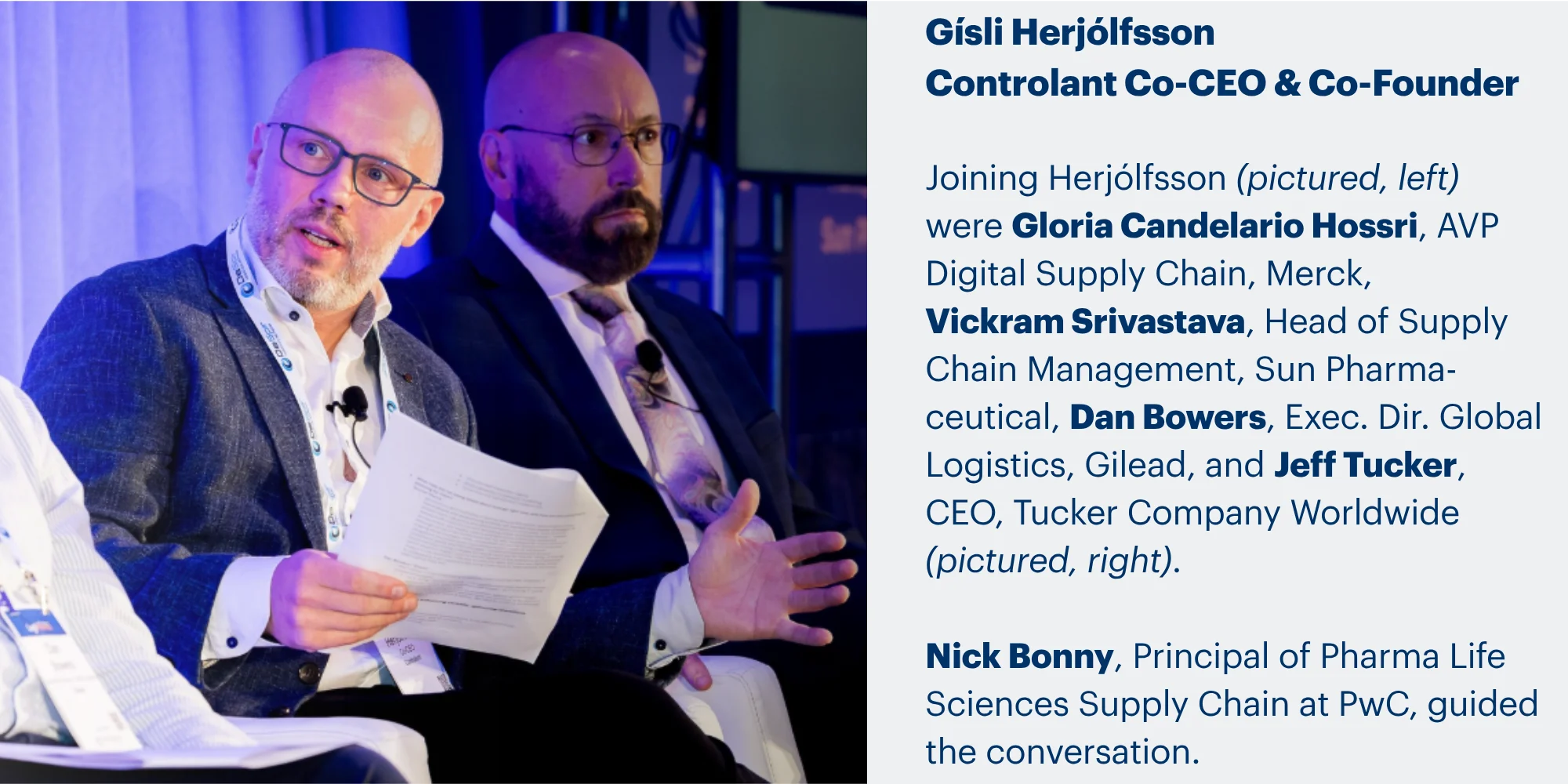Building resilient pharma supply chains: lessons from industry leaders
Insights from the opening keynote panel for the 20th Anniversary Event of LogiPharma US, 29 September 2025

How do pharmaceutical companies build resilience in the face of constant disruption? That question anchored Monday's opening keynote panel in Boston, which brought together five supply chain leaders for a wide-ranging discussion.

Visibility brings certainty
In an era of constant disruption—whether from natural disasters, geopolitical tensions, or supply chain breakdowns—real-time visibility has become essential for ensuring the availability of critical medicines.
Panelists reflected on how rapidly the landscape is changing. The pace is both remarkable and challenging: lessons learned today can be obsolete by tomorrow. This volatility has fundamentally shifted how pharmaceutical companies must operate.
The complexity of modern supply chains compounds these challenges. Some are asking whether strategies need to become more localized to shorten supply chains and accelerate decision-making.
While pharma supply chains traditionally move slowly through regulatory mazes—one panelist referred to them as elephants!—fast, automated decision-making has emerged as a competitive advantage and the cornerstone of agility and resilience. But digitalization alone is not enough—navigating these challenges successfully depends on the holistic adoption of technology.
Finding the value in real-time data
Herjólfsson: “If I look at our customers, the most successful in embracing digitalization are the ones who don't think in silos—they look at it holistically.
When people look at IoT tracking devices, for instance, they’re looking for shipment traceability or real-time visibility alarms, but there are other elements to consider—other benefits to gain from getting the right data at the right time.
One example comes from a company that decided to implement zero-touch release of products. They selected a validated solution that gives them 99.99% of the data all the time, and just by embracing that and taking the human out of the loop in product release—automatically analyzing the temperature instantly upon delivery—they started to reduce safety inventories a lot. Even if excursions happen, 99% of the products are auto-released because of the stability budget data.
So in this case, it was a matter of thinking holistically—not just during shipment but also post-shipment, and what the technology can do with that.”
Navigating an unpredictable world
Disruption can be defined as an absence of predictability. Before COVID-19, the pharma industry operated with relative certainty about manufacturing schedules, logistics capacity, and supply patterns. That predictability allowed companies to trust their processes and rely on established ecosystem behaviors.
During the pandemic, that confidence evaporated. The continuing lack of predictability has placed a premium on validated, real-time data—especially in pharmaceuticals. While tracking your Amazon order is convenient, knowing the status of life-saving, temperature-sensitive medications is absolutely critical.
Data as a customer service element
The silver lining is that crisis breeds innovation, and COVID-19 essentially compressed years of innovation into months—a phenomenon that Controlant experienced first hand, given their key role in the global distribution of the Pfizer-BioNTech COVID-19 vaccine. Controlant’s advanced IoT temperature monitoring solution helped to achieve a 99.99% successful vaccine delivery rate at an unprecedented scale.
“During the pandemic, we were faced with trying to disrupt a supply chain within a few months—instead of shipping to 500 destinations worldwide, we were faced with sending to 100,000 destinations,” Herjólfsson explains.
“A very good decision early in the project was to say: ‘We have qualified, validated data, so let's use that as a single source of truth in our decision-making.' "
"The data became more than just the means of tracking an individual shipment—it became a customer service element. It fueled automatic notifications to hospitals and clinics, and for automated product releases, etc.”
Continuous monitoring provides insights not only into current risk events, but also potential risks, their impacts, and mitigation strategies. Where it once took weeks or months to understand the impact of a hurricane or port closure, today that information is available within minutes or hours. As one panelist noted, “This is the power of digital.”
Technology meets strategy
However, technology alone isn't a silver bullet. Even with significant investment, real transformation only happens when business strategy and technology converge—when AI is balanced with human expertise, and when standard processes are matched with organizational maturity. Only then can companies fully leverage their technological investments.
Building resilience through data democratization
Balancing resilience and agility while managing costs remains a persistent challenge—one that underscores the value of end-to-end supply chain visibility.
Resilient pharmaceutical supply chains must be proactive about risk, not merely reactive. Digital tools that provide visibility across the value chain enable this proactive stance.
End-to-end visibility can be defined within the scope of a particular company or product—from manufacturing to patient, for example. But the definition is expanding to include suppliers and their suppliers—extending visibility deeper into the supply chain to strengthen resilience and anticipate disruptions before they hit.
True digitalization means more than just collecting data—it means democratizing it. Transparency cannot stop at organizational boundaries. Decisions made in silos, without awareness of the broader ecosystem, are inherently limited.
When data is shared across the supply chain, the whole becomes far greater than the sum of its parts. Your data gains exponentially more value when combined with insights from the wider ecosystem.
Herjólfsson: “The point is that there are great technologies out there, but if you only look at them in silos, you only get limited value from them.”
“My message is: break the barriers out of silos and think about it holistically.”
Schedule a demo
Discover how Controlant is transforming pharma supply chains with real-time visibility, automation, and sustainability at scale. Book a personalized demo to explore our platform, see how it works in action, and learn how it can future-proof your operations. Let’s connect and tailor a solution to your needs.

